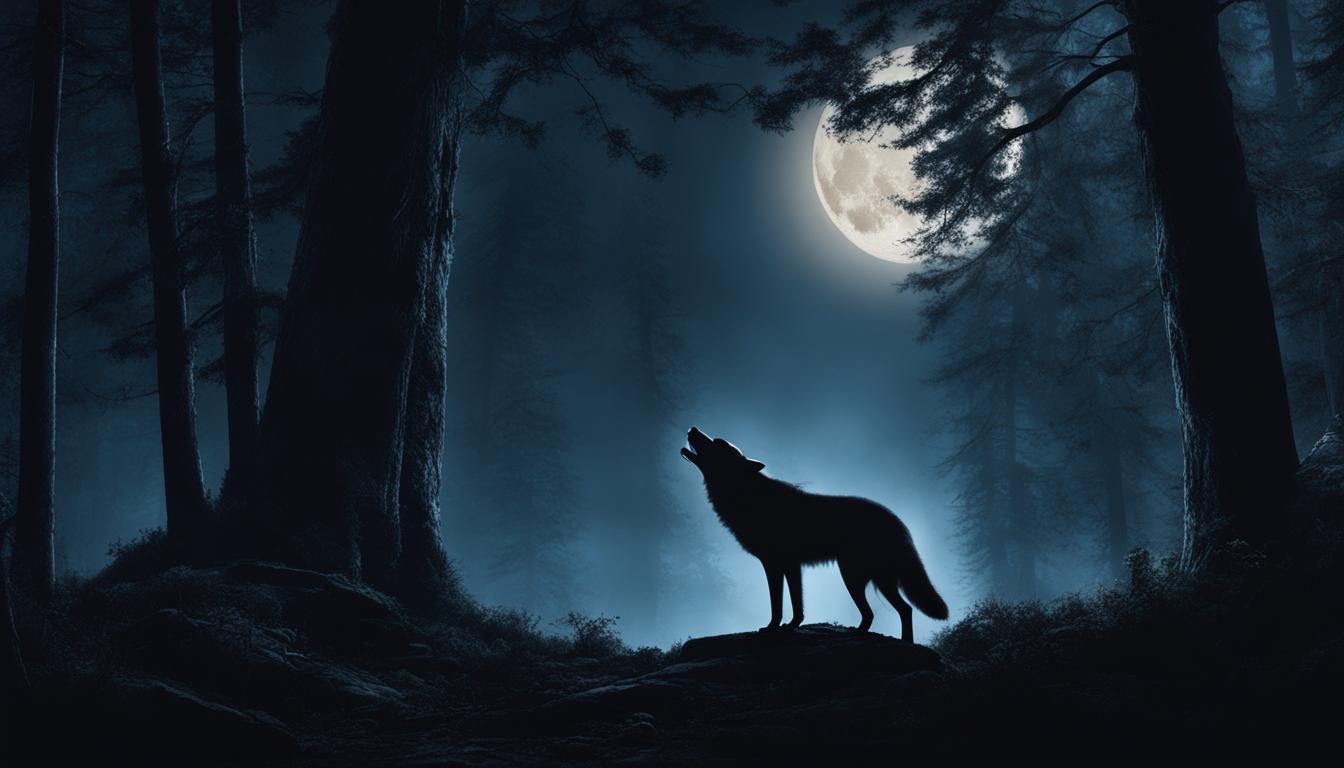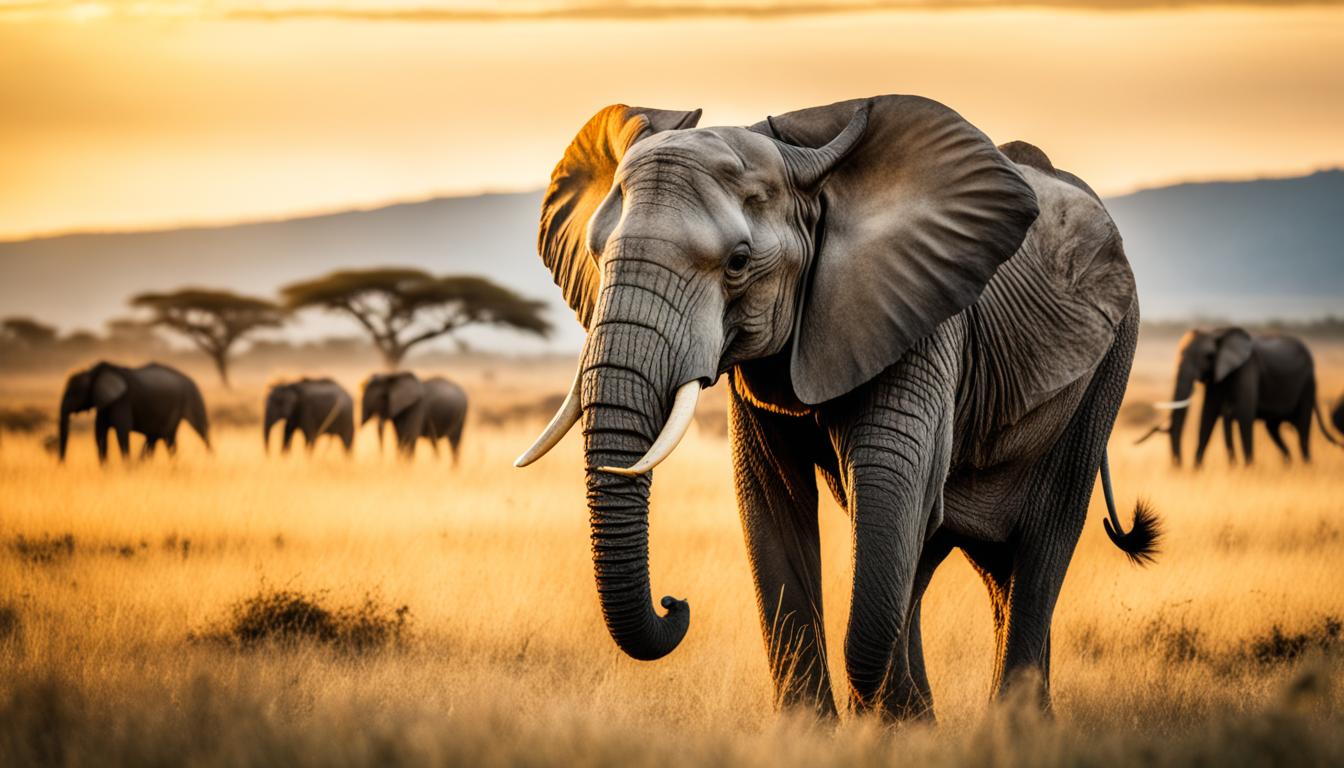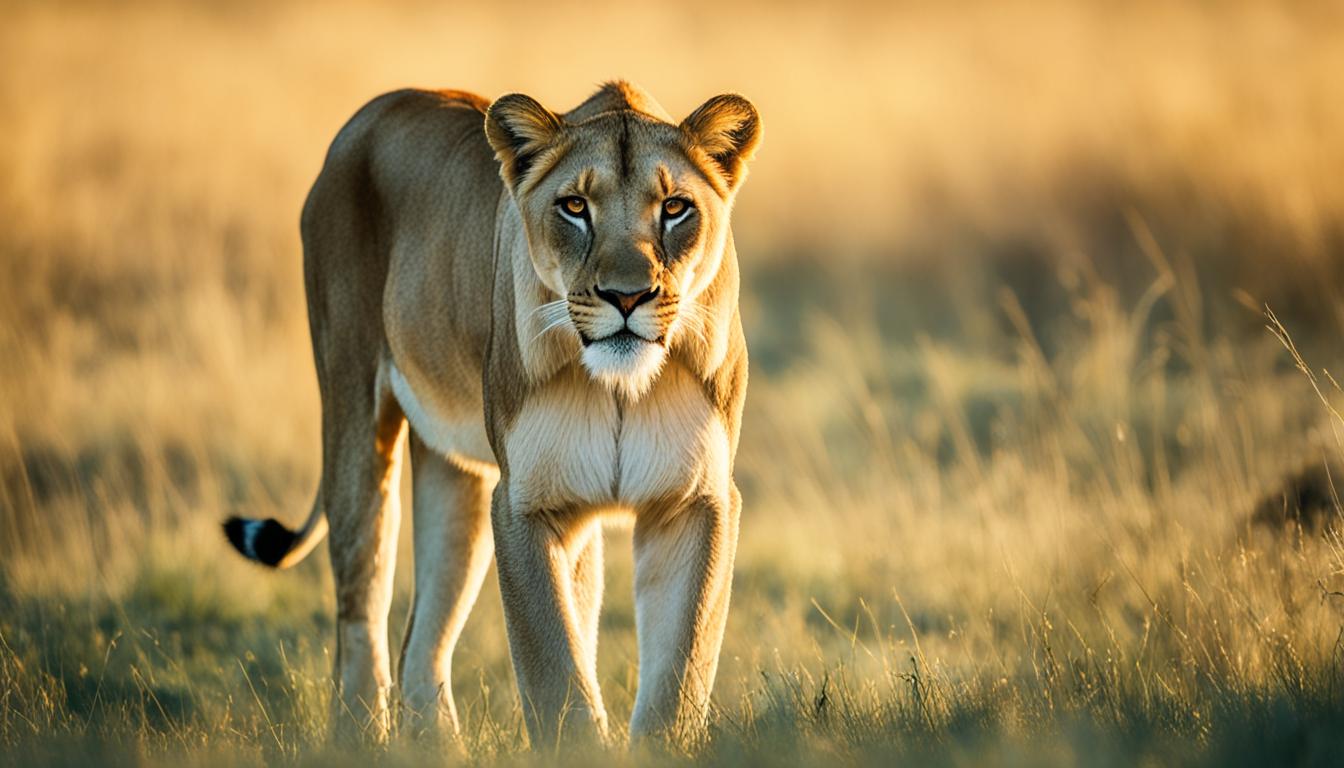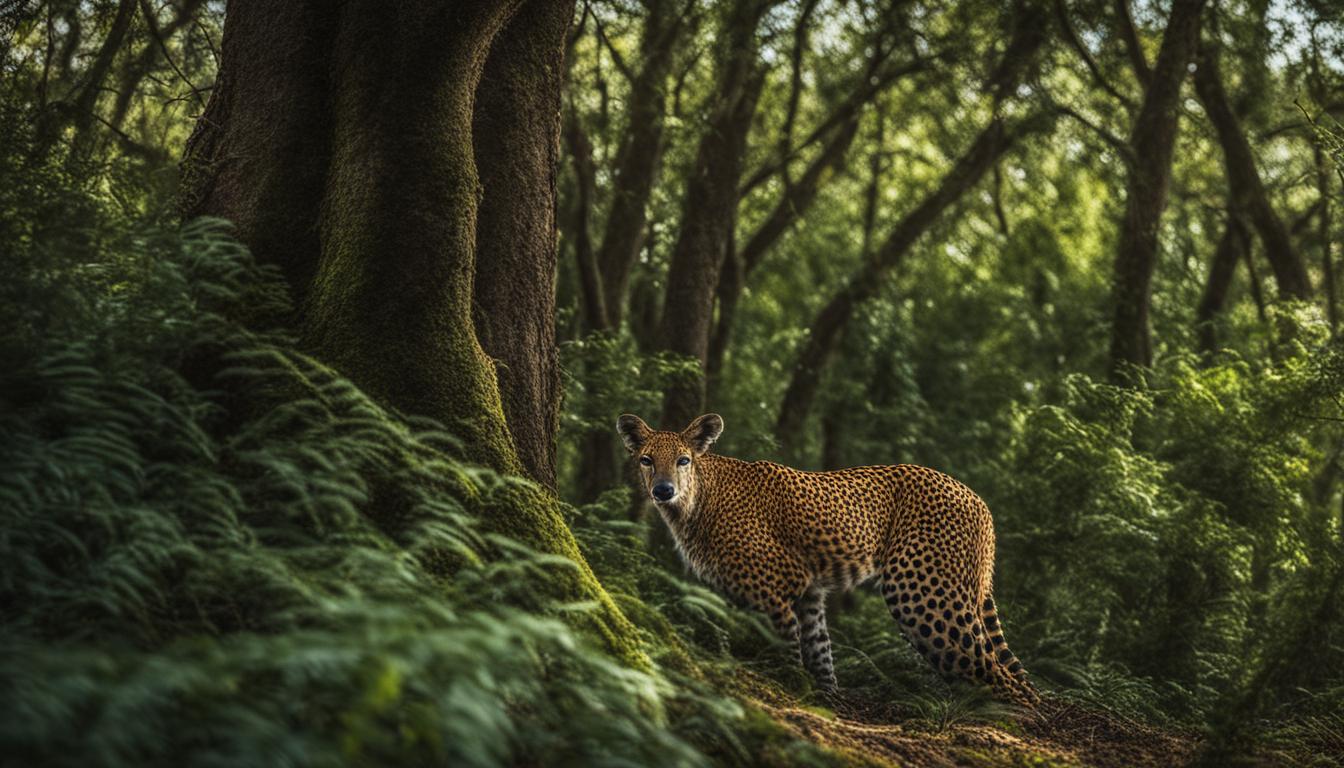Are you passionate about wildlife photography? Have you ever wondered how to capture stunning images of nocturnal creatures in their natural habitats? Look no further! In this article, we will share expert tips and techniques for mastering the art of night wildlife photography.
Shooting wildlife at night presents unique challenges due to the low light conditions. However, with the right knowledge, equipment, and techniques, you can capture breathtaking images that truly showcase the beauty and mystery of nighttime animal behaviors.
Whether you’re a seasoned wildlife photographer or a beginner eager to explore the wonders of nocturnal wildlife, we have compiled a comprehensive guide to help you elevate your night wildlife photography skills. From understanding animal behavior to choosing the right camera equipment, and employing mindful lighting techniques, we’ve got you covered.
So, grab your camera, buckle up, and get ready to embark on a thrilling adventure into the captivating world of night wildlife photography!
Key Takeaways:
- Study and understand the behavior of the animals you plan to photograph
- Choose the right camera and lenses for night wildlife photography
- Invest in a sturdy tripod for stability
- Carry essential nighttime accessories like a red light headlamp
- Use lighting techniques mindfully to avoid disturbing animals
Study your Subject and their Behavior
Before heading out to capture wildlife at night, it is crucial to study and understand the behavior of the animals you plan to photograph. Knowing where they usually hang out, how they move, and their feeding habits will help you anticipate their actions and capture better shots.
Consider tagging along with seasoned wildlife photographers or locals who are familiar with the animals to learn valuable insights and techniques. They can provide firsthand knowledge about the animals’ behavior and help you understand their patterns and preferences.
Observing animals in their natural habitat can also give you a deeper appreciation for their behavior and contribute to more impactful photography. By understanding their movements, you can position yourself in the right place at the right time to capture compelling moments.
While studying animal behavior, it’s essential to prioritize their welfare and minimize disturbances. Respect their space and adhere to ethical guidelines for wildlife photography.
Expert Tip:
Take note of the time of day when your subjects are most active. Some animals are more active during dawn or dusk, while others are nocturnal. Adjust your photography schedule accordingly to increase your chances of capturing dynamic shots.
Examples of Animal Behavior
| Animal | Behavior |
|---|---|
| Lions | Hunting in groups, resting during the hottest part of the day |
| Birds | Migrating in flocks, building nests during mating season |
| Elephants | Living in herds, using trunks to communicate |
Studying animal behavior allows you to anticipate their actions and capture unique moments. The table above gives you a glimpse into the diverse behaviors of different animals, highlighting the importance of understanding each species before photographing them.
By investing time in studying animal behavior, you can enhance your wildlife photography skills and create images that truly depict the natural essence of the animal kingdom.
Choose the Right Camera and Lenses
When it comes to night wildlife photography, selecting the right camera and lenses is crucial. You need equipment that allows for manual settings and interchangeable lenses to capture the perfect shot. Consider the following options:
- Mirrorless Cameras: These lightweight cameras offer excellent image quality and versatility. They are equipped with electronic viewfinders that simulate the final image and allow you to adjust settings in real-time, giving you a clear view of how your photo will turn out. Mirrorless cameras offer a wide range of lens options, providing the flexibility needed for diverse wildlife subjects and lighting conditions.
- DSLRs: Digital single-lens reflex cameras are known for their exceptional image quality and fast autofocus capabilities. They have a wide range of compatible lenses and offer full manual control, allowing you to fine-tune your settings for optimal results. DSLRs are especially suitable for capturing fast-moving wildlife at night.
Investing in weather-sealed camera bodies and lenses is essential for shooting wildlife in outdoor environments. This will protect your gear from moisture and ensure reliability during challenging weather conditions.
“Choosing the right camera and lenses is like selecting the perfect tools for your craft. It’s essential to have equipment that gives you the flexibility and control you need to capture stunning night wildlife photos.”
Invest in a Sturdy Tripod
In night wildlife photography, stability is key to capturing sharp and clear images. That’s why investing in a sturdy tripod is essential for your gear collection.
Using a tripod helps eliminate camera shake, preventing blurred shots that can result from handheld shooting in low light conditions. It provides a stable camera support, allowing you to focus on composition and capturing those precious moments of nocturnal wildlife.
When selecting a tripod, consider materials like carbon fiber or aluminum. These materials offer both durability and stability, ensuring your tripod can withstand the rigors of outdoor shooting.
Look for a tripod that features multi-angle legs, as this allows you to adapt to uneven surfaces and achieve the perfect positioning for your shots. Being able to adjust the legs independently gives you more creative freedom and flexibility in composing your photographs.
Remember to lock the legs securely in place once you have adjusted them. This will prevent any unwanted movement during long exposures, ensuring your images are sharp and devoid of any unwanted blurriness.
By investing in a high-quality tripod, you’ll have a stable foundation for your camera that will greatly enhance your night wildlife photography.

Why a Sturdy Tripod Matters
A sturdy tripod is crucial for night wildlife photography as it keeps your camera stable and prevents blurriness caused by camera shake.
Advantages of Carbon Fiber and Aluminum Tripods
- Carbon fiber tripods are lightweight and offer excellent stability, making them ideal for travel and outdoor photography.
- Aluminum tripods are durable and budget-friendly, providing reliable support for your camera.
Benefits of Multi-Angle Legs
- Adjustable legs allow you to adapt to uneven surfaces and achieve the desired camera angle.
- Independent leg adjustments provide more creative freedom and flexibility in composing your shots.
Essential Nighttime Accessories
When photographing wildlife at night, having the right accessories is key. Carry a headlamp with a red light function to navigate in the dark without disturbing nocturnal animals. This will also help with macro shots as red light is less distracting to the subjects. Consider investing in night vision equipment for better visibility in low light. These accessories will enhance your overall shooting experience and allow you to capture unique shots.
| Essential Nighttime Accessories | Description |
|---|---|
| Headlamp for Photography | A headlamp with a red light function enables you to navigate the darkness while minimizing disturbance to animals. |
| Red Light Headlamp | The red light emitted from a headlamp reduces distractions and is ideal for capturing macro shots. |
| Night Vision Equipment | Investing in night vision equipment enhances visibility in low light conditions, allowing you to capture wildlife activities with greater clarity. |
| Macro Photography Tips | Utilizing a headlamp with red light and night vision equipment will greatly improve your macro photography results. |
Enhance your night photography experience with these essential accessories, and unlock the potential to capture stunning images of nocturnal wildlife.
Use Lighting Techniques Mindfully
When it comes to night wildlife photography, lighting plays a crucial role in capturing stunning images. However, it’s important to use lighting techniques mindfully to ensure the comfort and safety of the animals you are photographing.
Prolonged artificial lighting can disturb and affect the night vision of animals, potentially disrupting their natural behavior. To avoid this, it’s recommended to use lighting techniques sparingly and avoid staying in one spot for an extended period.
Only utilize artificial light when necessary, such as when additional illumination is required for a detailed shot. Once you have captured the desired image, promptly turn off the artificial lighting to minimize disruption to the wildlife.
By practicing mindful lighting techniques, you not only respect the animals but also increase your chances of capturing authentic and natural moments in your photographs.
Benefits of Mindful Lighting Techniques:
- Preserves the night vision of animals
- Allows animals to behave naturally without excessive human interference
- Minimizes the risk of disturbing nocturnal creatures
- Promotes ethical wildlife photography practices
Remember, the goal of wildlife photography is to capture the beauty and essence of animals in their natural habitats. By using lighting techniques mindfully, you can achieve this while ensuring the well-being of the wildlife.
| Photography Lighting Techniques | Examples |
|---|---|
| Spotlighting | Using a focused beam of light to highlight specific areas of interest |
| Backlighting | Positioning the light source behind the subject to create a silhouette effect |
| Fill Flash | Using a low-intensity flash to fill in shadows and add detail to the subject’s face |
| Reflectors | Using reflective surfaces to redirect and diffuse natural or artificial light |
Remote Camera Trigger for Better Control
A remote camera trigger is an invaluable tool that can greatly enhance our control over the camera when shooting wildlife at night. With the ability to remotely control the camera’s shutter, focus, and other settings, we can capture photos without physically touching the camera, minimizing the risk of camera shake and blur. This level of control allows us to be more discreet and unobtrusive, ensuring that we don’t disturb the nocturnal animals we are photographing.
When it comes to remote camera triggers, there are advanced options available that offer even more functionality and convenience. Devices such as the MIOPS Smart Camera Trigger and RemotePlus Trigger provide smartphone-controlled features that take our night wildlife photography to the next level.
Utilizing advanced triggers like the MIOPS Smart Camera Trigger or RemotePlus Trigger, we can:
- Control our camera with a smartphone app: These triggers can be easily controlled using a dedicated smartphone application, allowing us to adjust settings, trigger the shutter, and even preview the image remotely.
- Capture photos with precise timing: We can set up the camera trigger to respond to specific sounds, lights, or movements, enabling us to capture unique and spontaneous moments in the wild.
- Experiment with time-lapse and long exposure photography: By using the remote camera trigger, we can easily capture stunning time-lapse sequences or long exposure shots without the need to physically operate the camera.
Using Motion Triggers for Dynamic Wildlife Shots
One of the most exciting features of advanced camera triggers is the ability to use motion triggers to capture dynamic wildlife shots. By setting up the trigger to respond to movement, we can capture animals in action, freezing their movements in a single frame. This allows us to create striking images that showcase the speed, agility, and beauty of nocturnal creatures.

A remote camera trigger opens up a world of possibilities in our night wildlife photography, giving us better control and the ability to capture unique shots with minimal disturbance. Whether we’re using sound triggers, light triggers, or motion triggers, these advanced devices allow us to elevate our photography to new heights.
Prioritize Safety in Wildlife Photography
Safety should always be a top priority in wildlife photography, especially when shooting at night. As photographers, we have a responsibility to protect ourselves, as well as the animals we capture through our lenses. By following these essential safety measures, we can ensure a safe and enjoyable experience while capturing breathtaking images of wildlife.
Obtaining Permits
Before setting up your equipment in any wildlife area, it is crucial to obtain the necessary permits from the authorities. This ensures that you are aware of any specific regulations and guidelines that need to be followed. Permit requirements may vary depending on the location and the type of wildlife you plan to photograph. Familiarize yourself with the permits needed in your desired shooting location and ensure you comply with all rules and regulations to protect the wildlife and the surrounding ecosystem.
Group Photography
When it comes to nighttime wildlife photography, it is advisable to go out in a group. The presence of fellow photographers not only provides an added sense of security but also allows for collaboration and exchange of ideas. Working in a group also reduces the risk of being alone in isolated areas, adding an extra layer of protection. Always inform someone about the photography location and expected return time, so that they can raise the alarm if needed.
Nighttime Security
While photographing wildlife at night, it’s important to be mindful of your surroundings and prioritize personal safety. Carry essential items such as a fully charged mobile phone, flashlight, and a first aid kit. Be aware of potential hazards in the area, such as uneven terrain, slippery surfaces, or poisonous plants. It’s also recommended to dress appropriately for the weather conditions and wear comfortable shoes to prevent accidents.
“In wildlife photography, capturing stunning images is important, but ensuring the safety of both the photographer and the animals is paramount.” – Wildlife Photographer John Smith
Respect for the animals and their habitats is essential. Always maintain a safe distance from the wildlife, avoiding any unnecessary disturbances. Approach slowly and quietly, allowing the animals to become comfortable with your presence. By being respectful observers, we can minimize stress to the animals and promote a positive coexistence between humans and wildlife.
By prioritizing safety in wildlife photography, we can pursue our passion for capturing remarkable images while showing respect for the animals and their natural habitats. Remember to always obtain permits, opt for group photography, ensure nighttime security, and maintain a safe distance from the wildlife. Let’s create memorable images while safeguarding the beauty and well-being of our wildlife subjects.
Conclusion
In conclusion, night wildlife photography offers an exhilarating opportunity to capture stunning images of animals in low light conditions. To excel in this field, it is important to study animal behavior, choose the right camera gear, and implement mindful lighting techniques. By understanding the habits and patterns of your subjects, you can anticipate their movements and capture the perfect shot.
Investing in the appropriate camera and lenses, such as mirrorless or DSLR with interchangeable lenses, will give you the flexibility to adapt to different lighting situations and capture wildlife from various distances. Additionally, a sturdy tripod is essential to keep your camera stable and eliminate any blurriness caused by camera shake during long exposures.
When photographing wildlife at night, it’s important to prioritize safety and respect for the animals. Obtain the necessary permits, consider going out in a group for added security, and maintain a safe distance to ensure the comfort and well-being of the wildlife. Finally, remember to enjoy the process and happy shooting as you capture the beauty of night wildlife through your lens!
FAQ
What skills do I need to excel in night wildlife photography?
To excel in night wildlife photography, it is important to have a strong foundation in photography skills and a deep understanding of animal behavior.
How can I study the behavior of the animals I want to photograph?
Before heading out to capture wildlife at night, it is crucial to study and understand the behavior of the animals you plan to photograph. Consider tagging along with seasoned wildlife photographers or locals who are familiar with the animals to learn valuable insights and techniques.
What camera should I use for night wildlife photography?
Selecting the right camera and lenses is essential for night wildlife photography. Consider using a mirrorless camera or a DSLR that allows manual settings and interchangeable lenses.
What kind of tripod should I use for night wildlife photography?
A sturdy tripod is crucial for night wildlife photography as it keeps your camera stable and prevents blurriness caused by camera shake. Invest in a tripod made of carbon fiber or aluminum for durability and stability.
What accessories are essential for night wildlife photography?
When photographing wildlife at night, having the right accessories is key. Carry a headlamp with a red light function to navigate in the dark without disturbing nocturnal animals. Consider investing in night vision equipment for better visibility in low light.
How should I use lighting techniques in night wildlife photography?
Lighting plays a crucial role in night wildlife photography, but it should be used mindfully. Prolonged artificial lighting can disturb and affect the night vision of animals. Use lighting techniques sparingly and avoid staying in one spot for an extended period.
How can a remote camera trigger improve my night wildlife photography?
A remote camera trigger can greatly enhance your control over the camera when shooting wildlife at night. Consider using advanced triggers like MIOPS Smart Camera Trigger or RemotePlus Trigger.
What should I prioritize in wildlife photography, especially at night?
Safety should always be a top priority in wildlife photography, especially when shooting at night. Before setting up your equipment, ensure you have obtained the necessary permits from the authorities governing the wildlife area. It is advisable to go out in a group for added security, especially during nighttime photography.
How can I excel in night wildlife photography?
With the right techniques and equipment, night wildlife photography can be a thrilling and rewarding experience. By studying animal behavior, using the appropriate camera gear, and practicing mindful lighting techniques, you can capture stunning images of wildlife in low light conditions.
Can the Techniques for Low Light Photography also be Applied to Night Wildlife Photography?
When it comes to night wildlife photography, utilizing the same tips for low light photography can be incredibly useful. Adjusting your camera settings, using a tripod, and understanding how to work with available light are all essential for capturing stunning images of nocturnal animals in their natural habitat.




